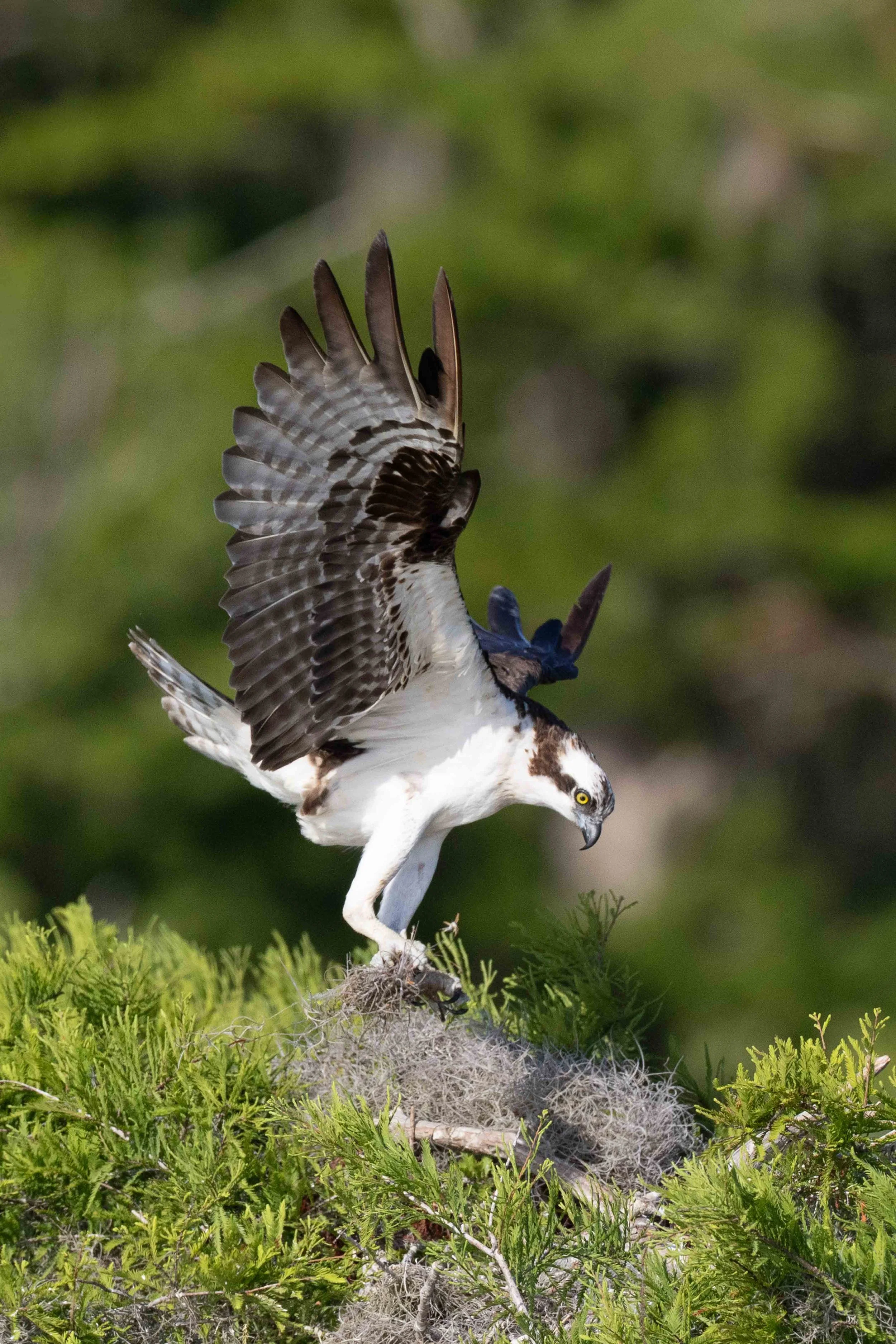When the Birds Don’t Pose: A Florida Photographic Adventure
As a wildlife photographer, I’ve been privileged to chase light and life across the globe—tracking jaguars through the dense wetlands of Brazil’s Pantanal, crouching on Antarctic ice for the perfect penguin portrait, and scanning the vast savannahs of Africa for avian treasures with feathers more brilliant than the sunrise. But for all my far-flung travels, one major birding destination had eluded me until now: Florida.
With its unique ecosystems, abundant wetlands, and reputation as a haven for spoonbills, ospreys, and countless other species, Florida had long been on my list. This spring, I finally made it happen. I booked a seven-day trip and hired seasoned guide Ron Beilfeld of Whistling Wings Photography to help maximize my chances of success.
Expectations in Tow
I arrived in Florida with hope, energy, and two specific photographic targets in mind: the elegant, candy-pink roseate spoonbill and the osprey, mid-dive if possible, talons extended. The spoonbill had long intrigued me—not just for its flamboyant coloration, but for its quiet dignity and slow, methodical feeding behavior. The osprey, on the other hand, I admired for its precision, strength, and aerial grace.
With Florida’s reputation, a professional guide, and my gear prepped, I expected a fruitful week. But wildlife photography, as I often tell others, is never predictable. And this trip became a poignant reminder of that truth.
Landing Osprey
The Reality of the Field
Over the course of seven days, we visited some of Florida’s most promising wildlife locations—protected marshlands, nesting sites, and hidden spots known only to local experts. Ron’s knowledge was impeccable; his enthusiasm, contagious. We put in long days, rose before the sun, and remained patient.
But the perfect shots? They were elusive.
The spoonbills were skittish or too distant. The ospreys either flew too high or dove behind mangroves. I captured some decent frames—behavioral moments—but the magic I’d envisioned wasn’t quite there.
At first, I felt frustrated. After so many years of honing my craft, planning this trip meticulously and investing in the right help, it was hard not to measure the results by the number of “keepers.” But the more I sat quietly on Ron’s boat, listening to the rustle of reeds and the cries of unseen birds, the more I realized this trip wasn’t just about images. It was about the experience of Florida’s wild side—and the subtle lessons it offered.
Florida’s Unscripted Beauty
What Florida lacked in cooperative spoonbills, it made up for in textures and tones I hadn’t quite anticipated. The quality of light—muted, gold-tinted, often filtered through fog—brought an ethereal softness to the landscape. A lone anhinga drying its wings on a dead branch. Alligators floating like prehistoric logs.
One aftrenoon after hours in the boat as we were all returning to our cars, I watched a great blue heron dance through a shallow drainage canal and emerge with a giant catfish, trying to swallow the bite that was way to large. I didn’t raise my camera. I just watched. It was comical and an example of life’s difficulties.
Roseate Spoonbill stick marsh
The Photographer’s Inner Journey
There’s a subtle pressure, especially as an experienced photographer, to come back from each trip with portfolio-worthy images. And while I’ve certainly had successful shoots in dramatic, remote locations—from eagles in Finland to Sloths in Costa Rica—this Florida trip was a quiet reminder that not every expedition needs to result in perfection.
Disappointment, I’ve learned, is part of the creative process. It forces us to reassess not just our expectations, but our why. Why do we do this work? Why spend hours in the field, gear-heavy and bug-bitten, for uncertain results?
For me, the answer is simple: because I love it. Because I love the way wildlife photography demands both patience and precision. Because I love learning the rhythm of a place. And because, even when the birds don’t pose, they still offer you their world—if you’re willing to see it.
Working with a Guide: Ron Beilfeld
While the photographic results weren’t what I’d hoped, I want to take a moment to thank Ron Beilfeld of Whistling Wings Photography. His deep knowledge of Florida’s avian habitats, his respectful approach to wildlife, and his calm, encouraging demeanor made every day enjoyable. He knew the timing of the tides, the calls of the birds, and how to navigate spots that were often off the beaten path.
For photographers considering a Florida trip, I highly recommend working with someone like Ron—not just to find the birds, but to understand the delicate dance between patience, presence, and persistence that Florida demands.
Roseate Spoonbill nest building
Looking Ahead
This trip, though not as fruitful as I had imagined in terms of photographs, reminded me of the importance of reflection, humility, and reconnecting with the why behind the lens. I left Florida with a handful of interesting frames—and a mind full of new questions. Could I have done something differently? What does it mean to "succeed" in wildlife photography, anyway? I know I will return to Florida and try again to get the shots I missed and maybe a different shot.
These aren’t failures. They’re seeds. Seeds that will grow into better planning, deeper intuition, and—most importantly—greater appreciation for the journey, not just the result.
What I Would Do Differently Next Time
If you're considering a Florida bird photography trip, here are a few lessons from my experience:
Be flexible with your targets. Birds are unpredictable. Broaden your focus and stay open to surprise encounters.
Consider multiple guides or locations. One guide may specialize in certain habitats. Covering more ground could yield more variety.
Accept the off days. Even seasoned professionals come home with empty cards. That’s part of the truth we rarely share—but should.
Final Thoughts
This Florida trip didn’t produce the spoonbill-in-flight image of my dreams. It didn’t give me an osprey dive that I’d frame in a gallery. But it gave me something else: a reminder that not getting the shot doesn’t mean the experience lacked value.
When the birds don’t pose, they still speak. You just have to listen differently.
And sometimes, the best photo isn’t the one you take—it’s the one you carry in memory, shaped by light, patience, and love for the craft.



